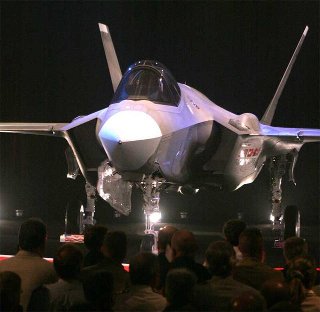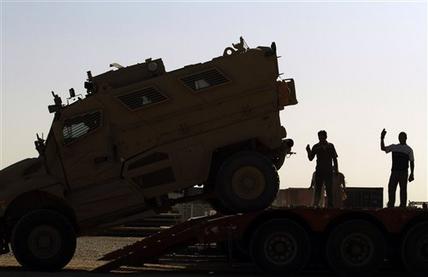WASHINGTON As the White House eagerly highlights the departure of U.S. combat troops from Iraq, the small army of American diplomats left behind is embarking on a long and perilous path to keeping the volatile country from slipping back to the brink of civil war.Among the challenges are helping Iraq’s deeply divided politicians form a new government; refereeing long-simmering Arab-Kurd territorial disputes; advising on attracting foreign investment; pushing for improved government services; and fleshing out a blueprint for future U.S.-Iraqi relations.
President Barack Obama also is banking on the diplomats – about 300, protected by as many as 7,000 private security contractors – to assume the duties of the U.S. military. That includes protecting U.S. personnel from attack and managing the training of Iraqi police, starting in October 2011.The Iraq insurgency, which began shortly after U.S. troops toppled Baghdad in April 2003, is why the U.S. only now is entering the post-combat phase of stabilizing Iraq. Originally, the U.S. thought Iraq would be peaceful within months of the invasion, allowing for a short-lived occupation and the relatively quick emergence of a viable government.Although the insurgency has been reduced to what one analyst terms a “lethal nuisance,” it will complicate the State Department’s mission and test Iraq’s security forces.Much is at stake as the department negotiates with the Pentagon over acquiring enough Black Hawk helicopters, bomb-resistant vehicles and other heavy gear to outfit its own protection force in Iraq.
“Regardless of the reasons for going to war, everything now depends on a successful transition to an effective and unified Iraqi government and Iraqi security forces that can bring both security and stability to the average Iraqi,” says Anthony Cordesman of the Center for Strategic and International Studies. In his view that transition will take five years to 10 years.
The question is whether progress will be interrupted or reversed once American combat power is gone.The U.S. will have 50,000 troops in Iraq when the combat mission officially ends Aug. 31; they are scheduled to draw down to zero by Dec. 31, 2011. Until then, they will advise and train Iraqi security forces, and provide security and transport for the diplomats.
Gen. Ray Odierno, the top U.S. commander in Iraq, said in an interview to be broadcast Sunday on CNN’s “State of the Union” that he believes Iraq’s security forces have matured to the point where they will be ready to shoulder enough of the burden to permit the remaining 50,000 U.S. soldiers to go home at the end of next year.”My assessment today is they – they will be,” Odierno said, according to an excerpt of the interview released Saturday by CNN.”We continue to see development in planning, in their ability to conduct operations,” he added. “We continue to see political development, economic development and all of these combined together will start to create an atmosphere that creates better security.”
Once the U.S. troops are gone, the State Department will be responsible for the security of its personnel.Obama administration officials say the diplomats are well prepared for what the State Department expects to be a three to five-year transition to a “normal” U.S.-Iraqi relationship.”We are fully prepared to assume our responsibilities as we move through this transition from a military-led effort to a civilian-led effort,” department spokesman P.J. Crowley said.
Iraq watchers have their doubts.Kenneth M. Pollack, a frequent visitor to Iraq as director of Middle East policy at the Brookings Institution, says the administration is in danger of underestimating the difficulty it faces.”One of the biggest mistakes that most Americans are making is assuming that Iraq can’t slide back into civil war. It can,” Pollack said. “This thing can go bad very easily.”Pollack, who does not consider himself a pessimist on Iraq, said the historical record on civil wars around the globe shows that about half repeat themselves.
“So it is a huge mistake to assume it can’t” happen in Iraq, whose civil strife in 2005-07 was so violent that many Americans assumed the war was lost and believed U.S. troops should give up and go home.Pollack considers the State Department ill-suited for its new tasks – starting with the police training mission and including the complex developmental problems such as improving Iraq’s water system.”What the State Department is being asked to do isn’t in their DNA,” Pollack said.The department has been strongly criticized for its past work in Iraqi police training. An October 2007 report by the Special Inspector General for Iraq Reconstruction, Stuart W. Bowen Jr., said the State Department had so badly managed a February 2004 contract for Iraqi police training that the department could not tell what it got for the $1.2 billion it spent.
In May 2004 President George W. Bush put the Pentagon in charge of all security force development.The newly departed U.S. ambassador to Baghdad, Christopher Hill, says he sees brighter days ahead for Iraq, but he also laments “woefully low” supplies of electricity and deeply ingrained tensions among the three main competitors for political power: Sunnis, Shiites and Kurds.”There is a mountain of mistrust,” Hill said.The diplomats’ postwar task would have been much easier if, as the administration once hoped, Iraq had formed a new government by now, nearly six months after its March 7 national elections.Instead, the political stalemate with no end in sight – has created another hurdle to the central U.S. goal in Iraq: translating hard-fought security gains into stability.Still, there is optimism in some quarters.
“While there are no guarantees, the prospects for Iraq’s security and stability beyond 2011 look as good or better than they have at any time in the recent past,” John Negroponte, who was U.S. ambassador to Iraq in 2004-05, wrote Thursday in a ForeignPolicy.com blog.Another complication is the shake up of key U.S. players in Baghdad.Odierno leaves Baghdad on Sept. 1 for a new assignment in the U.S., and Gen. David Petraeus, who was Odierno’s boss as head of Central Command, switched last month to take command in Afghanistan. Hill was replaced in Baghdad this past week by James Jeffrey, who was the U.S. ambassador to Turkey.(AP)


